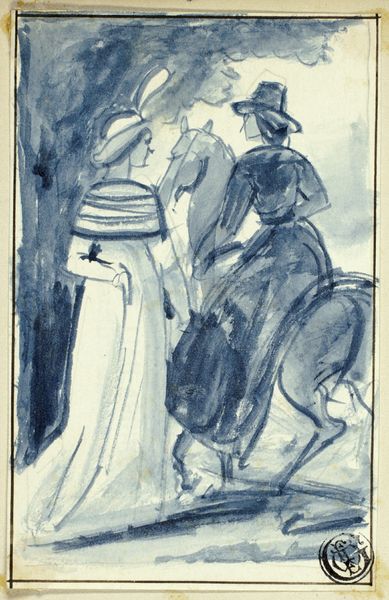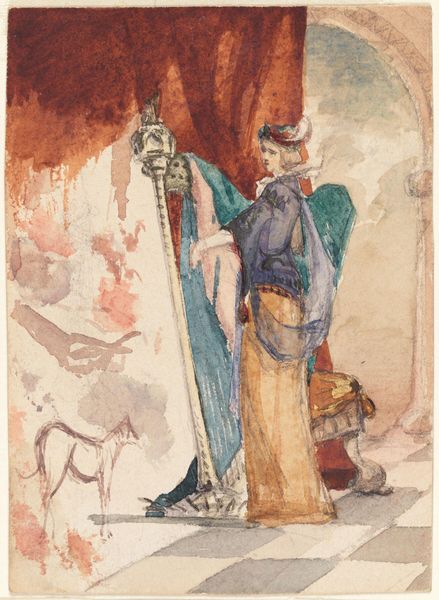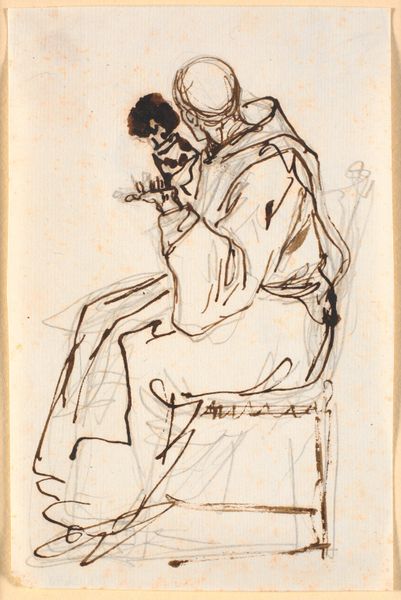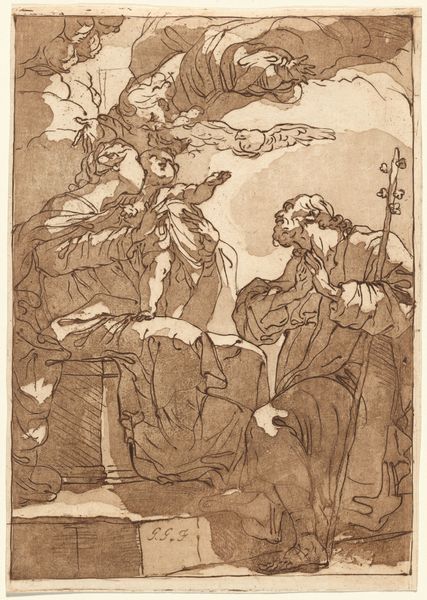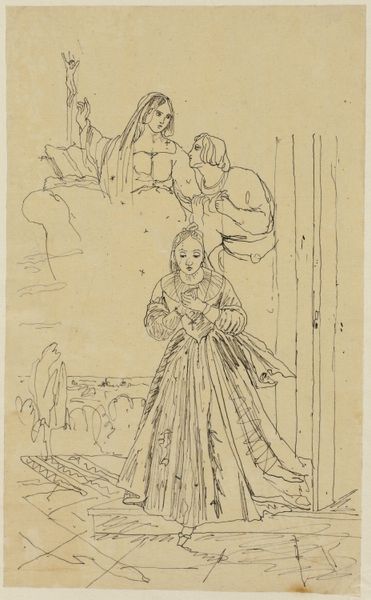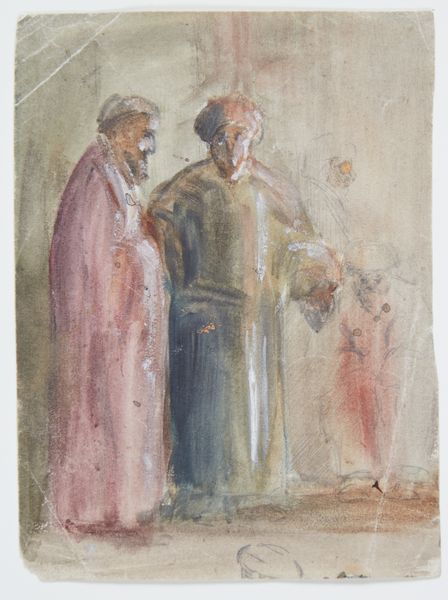
One of the Ladies of the Harem (recto); Fragment of a Landscape (verso) 1854 - 1856
0:00
0:00
drawing, painting, print, paper, watercolor, ink, graphite
#
portrait
#
drawing
#
painting
# print
#
charcoal drawing
#
paper
#
watercolor
#
ink
#
coloured pencil
#
coffee painting
#
underpainting
#
orientalism
#
france
#
graphite
#
genre-painting
Dimensions: 365 × 264 mm
Copyright: Public Domain
Curator: Constantin Guys, a French artist active in the mid-19th century, created this drawing titled "One of the Ladies of the Harem." What strikes you most when you first look at it? Editor: Immediately, it’s the contrast of lightness and shadow. The layered gowns hint at luxury, but it is achieved with a fairly limited color palette—mostly browns, whites, and blues. And I notice it's executed on paper using a combination of ink, watercolor, graphite, and charcoal drawing, quite an extensive variety of mediums. Curator: I find the figures haunting, almost spectral. Guys worked as a war correspondent and made illustrations for newspapers—there’s a sketch-like quality to his process that feels immediate and ephemeral, like capturing a fleeting glimpse, a shadow. The very choice of ink and wash seems to evoke a fragile memory. Editor: True. Looking at it now knowing his history in journalism, the speed and replicability of print culture must have been highly influential, so, the marks themselves almost represent a kind of mass production, don't you think? These materials enabled a rapid turnover of images for public consumption. It certainly makes one reconsider what “originality” meant then, even in a so-called drawing. Curator: It certainly seems that his intention was not necessarily a "finished" or highly polished piece, rather it evokes feeling above all else. And even in that fragility, the central figure projects this fascinating combination of defiance and resignation. Editor: Resignation, definitely. The angle of her gaze downwards hints at some melancholy, yet her attire—the bangles, parasol—speak of lavish servitude. It feels like he’s showing us a complicated relationship to labor through what she must wear, use, or be burdened by. Even how the background and foreground figures appear or don’t speaks to how much power the lady has as an individual. Curator: And even those materials themselves, readily available and inexpensive, seem to reflect on her—or Guys'—access to wealth or its imitation. He wasn't afraid to make commentary and criticisms about those that possessed capital. Editor: Exactly, the materials themselves hint at these narratives, so much to think about when examining an ostensibly decorative sketch! Curator: Indeed! And as we depart from this captivating depiction, one can not but think on the artist’s fascination and complex understanding of wealth, the material culture, and gender. Editor: I’ll be thinking about the hidden implications behind the “simple” materials on which so many stories are inscribed.
Comments
No comments
Be the first to comment and join the conversation on the ultimate creative platform.

